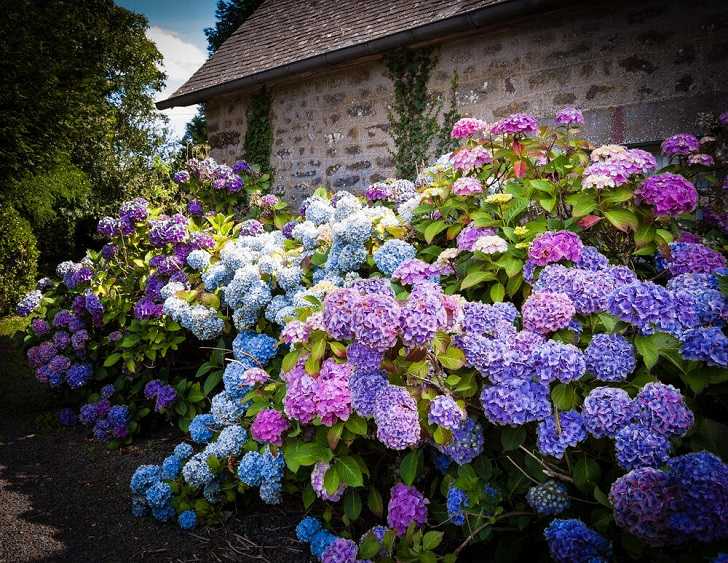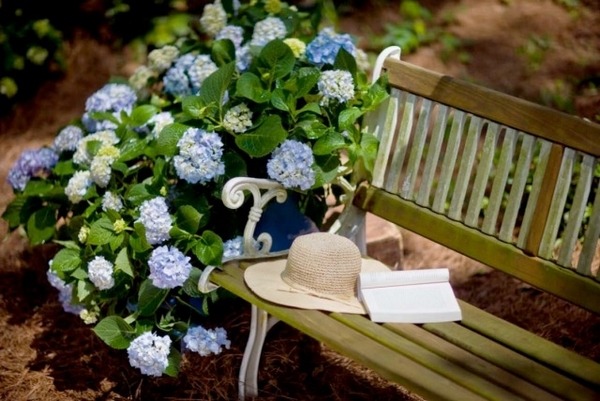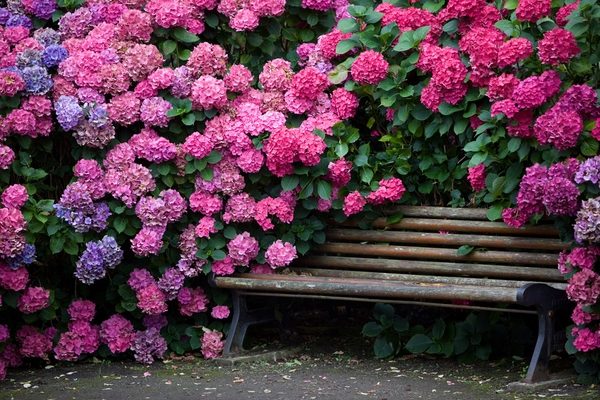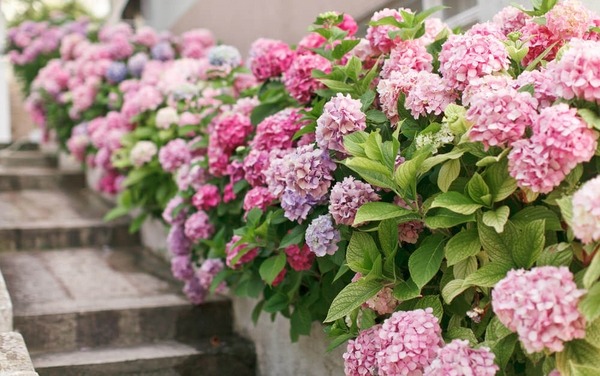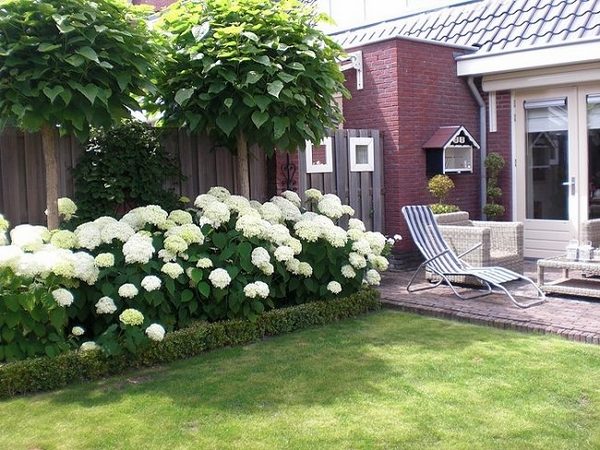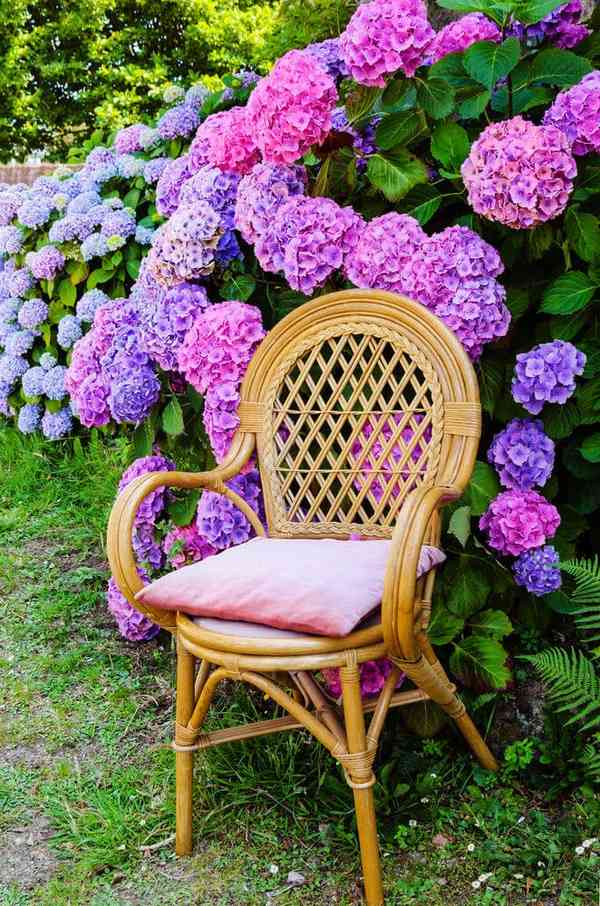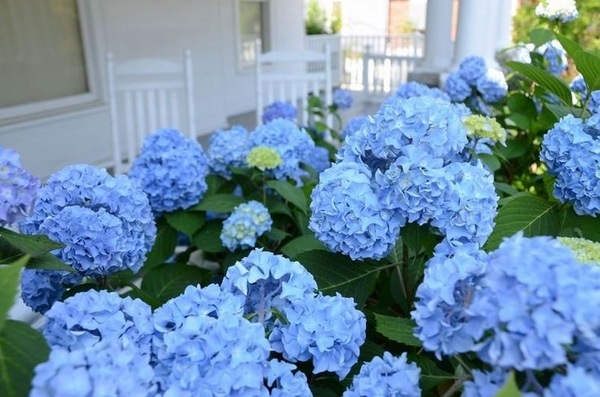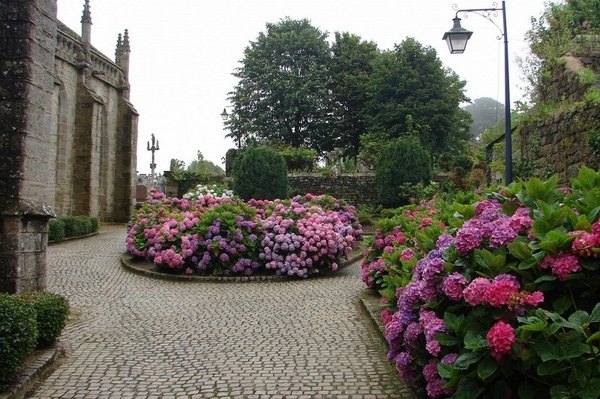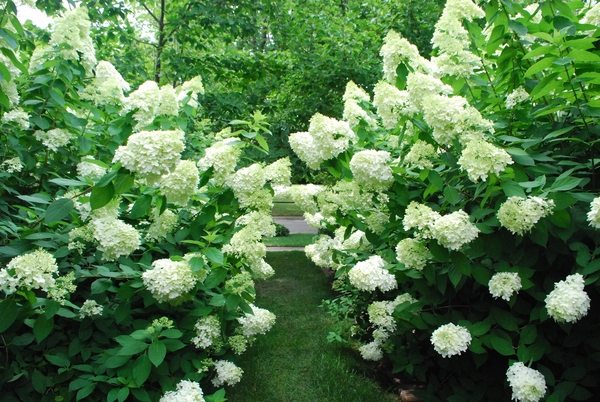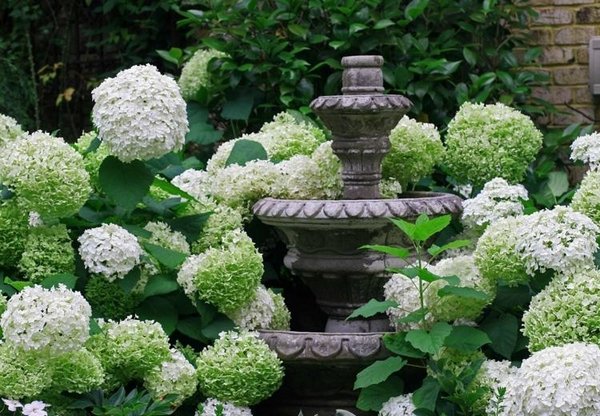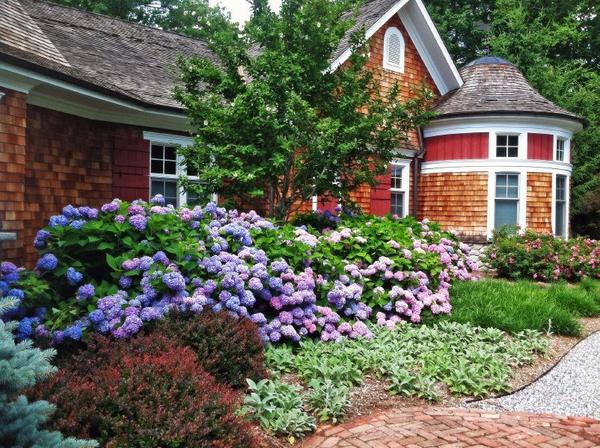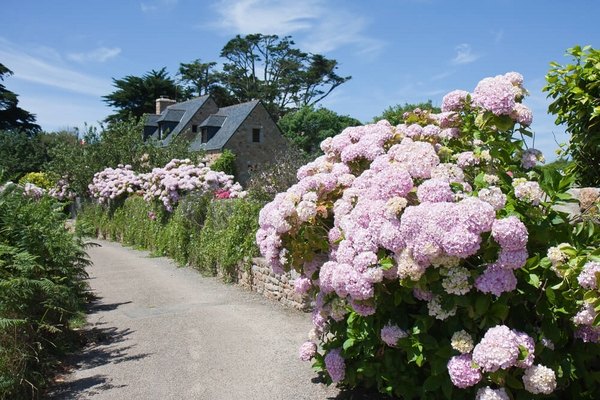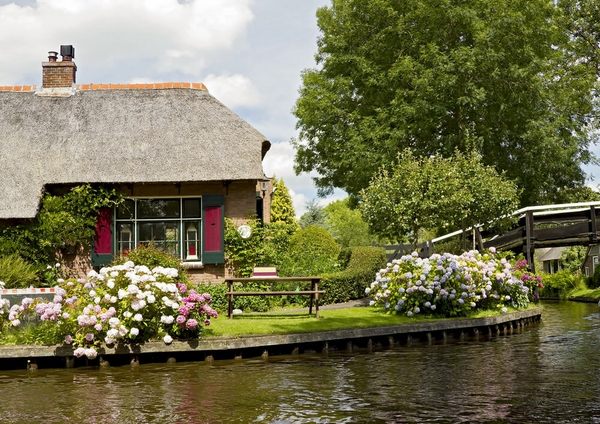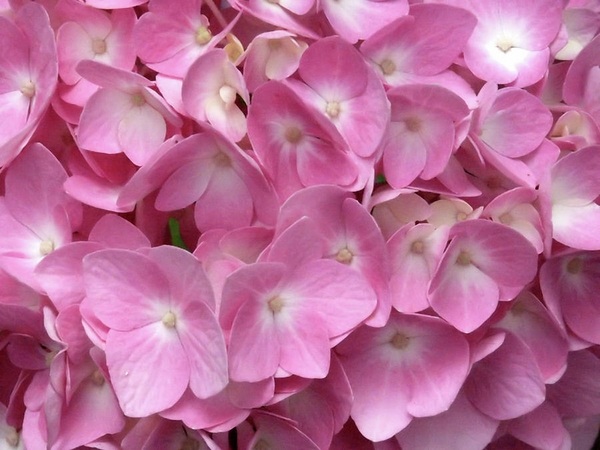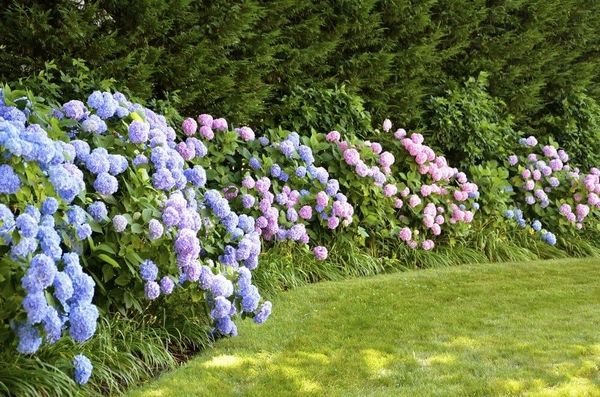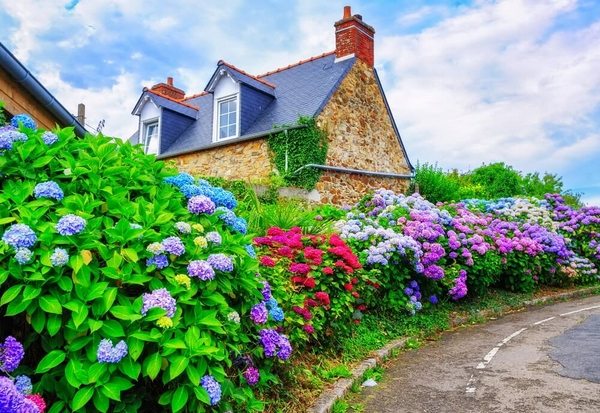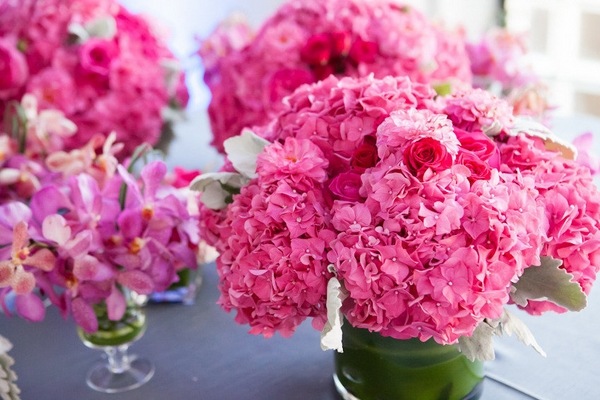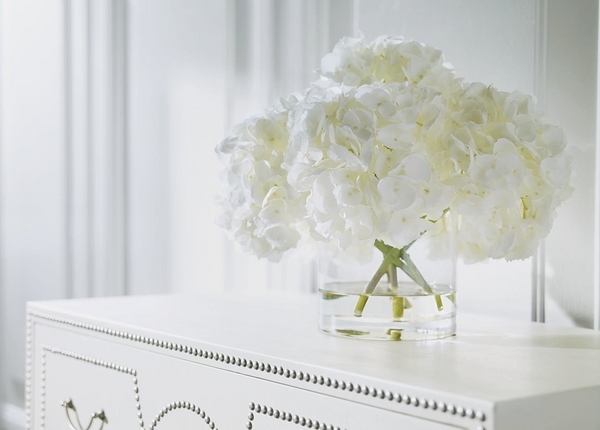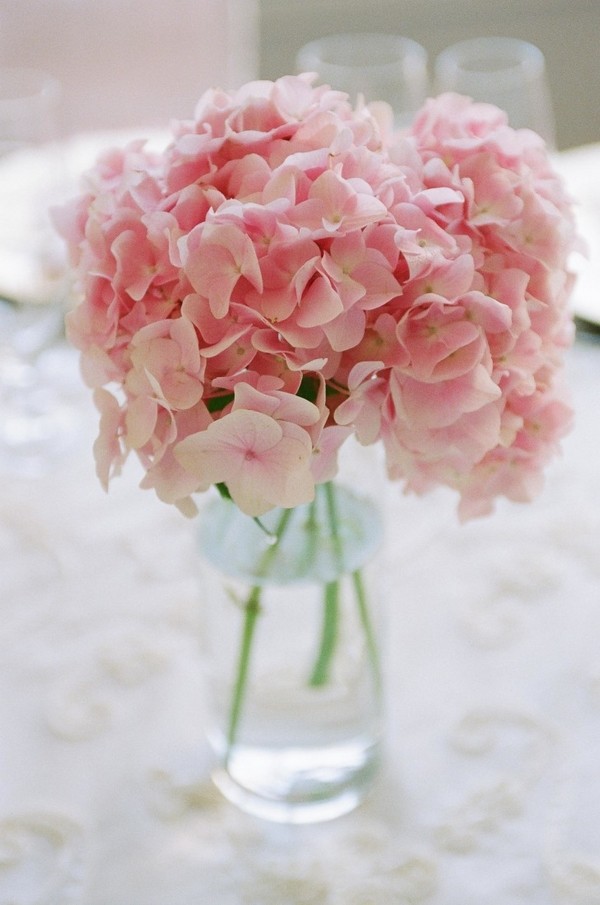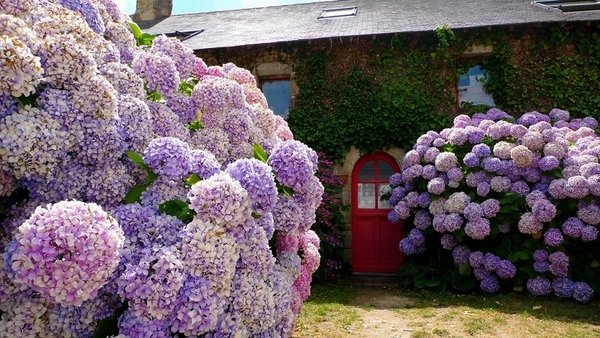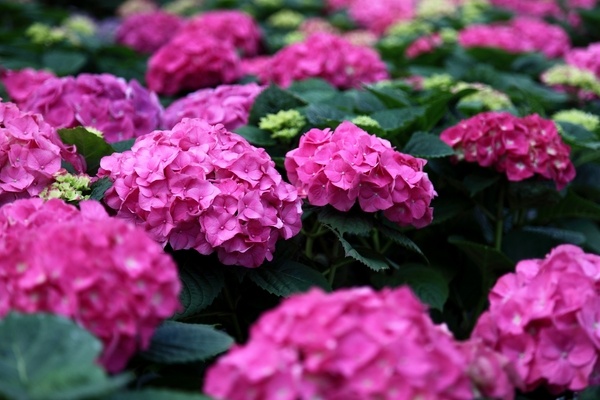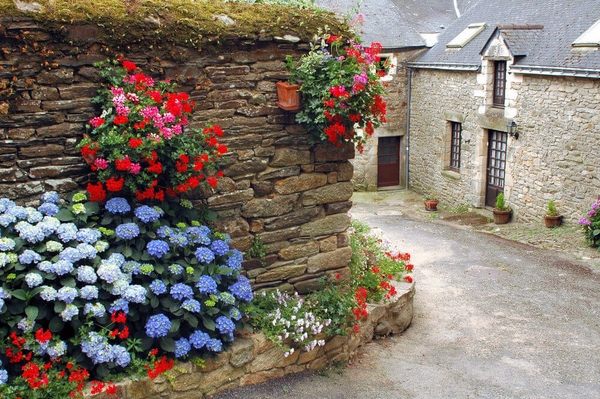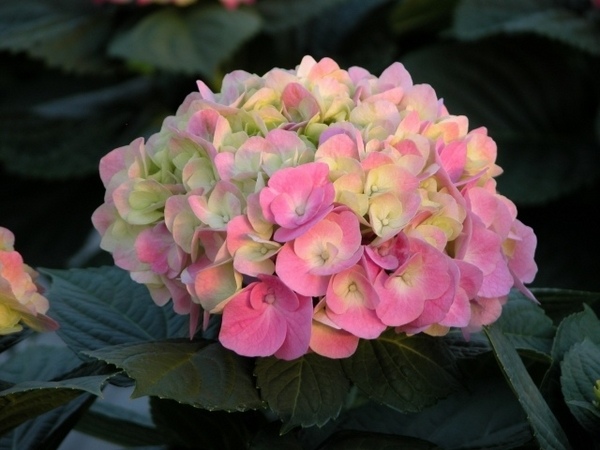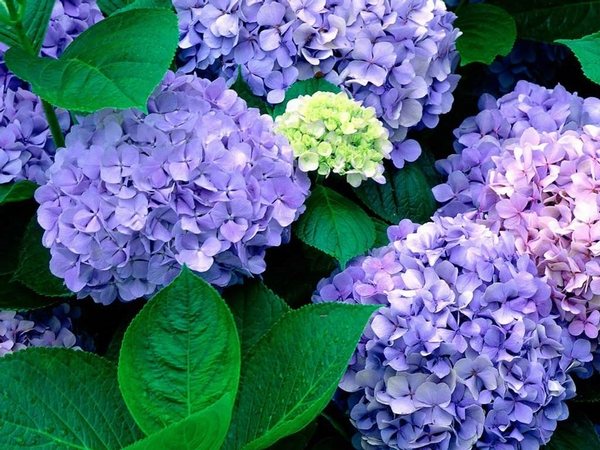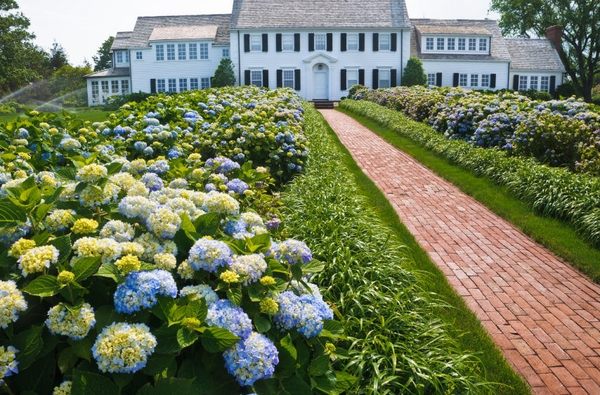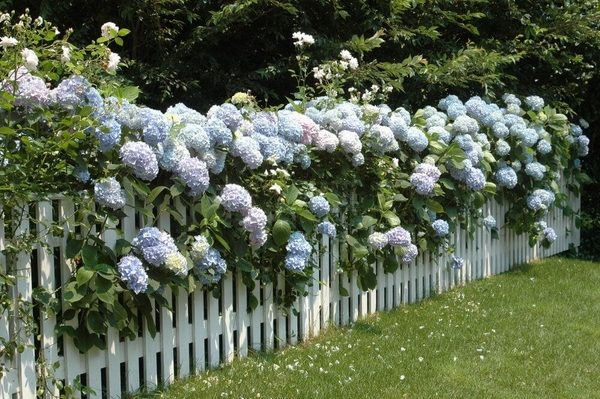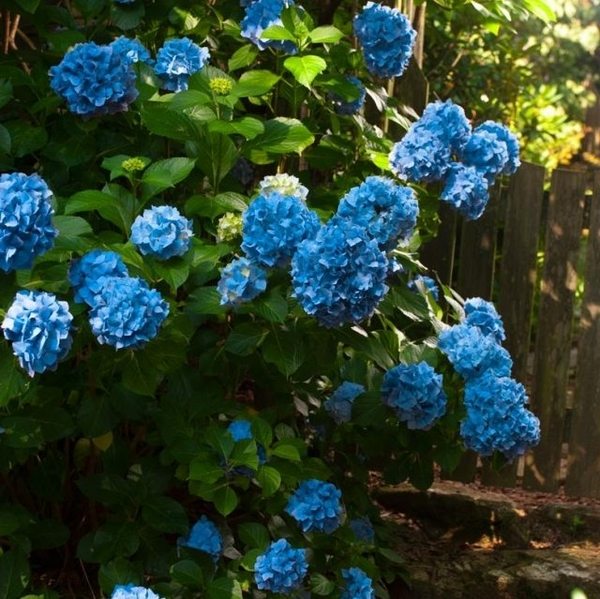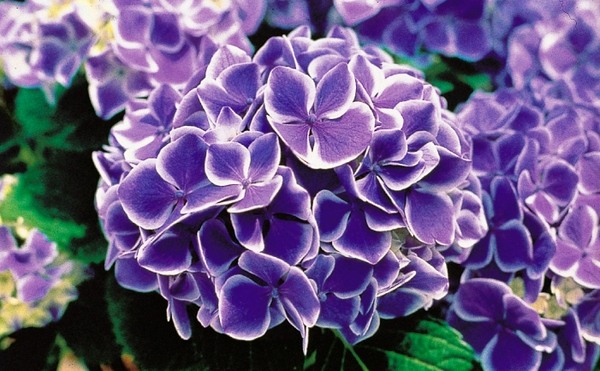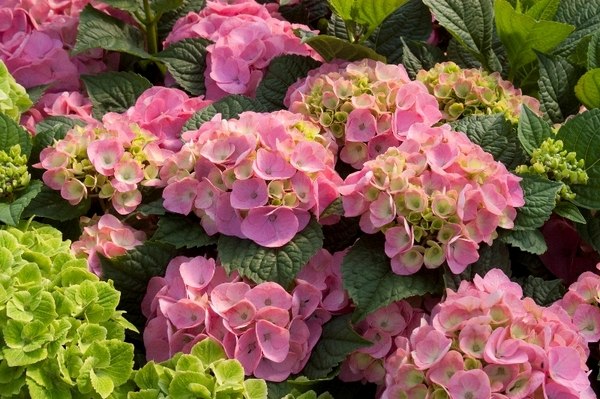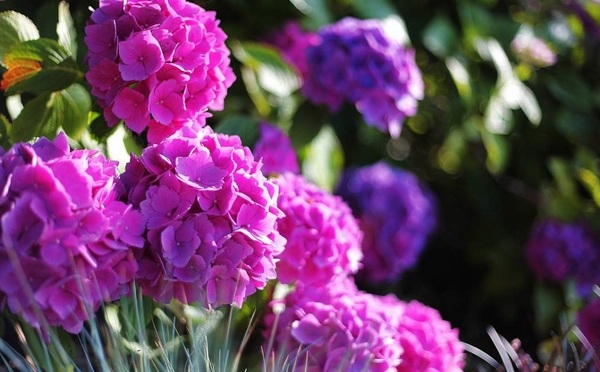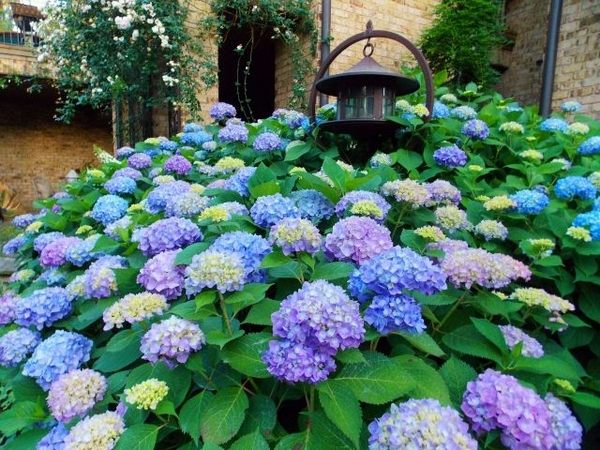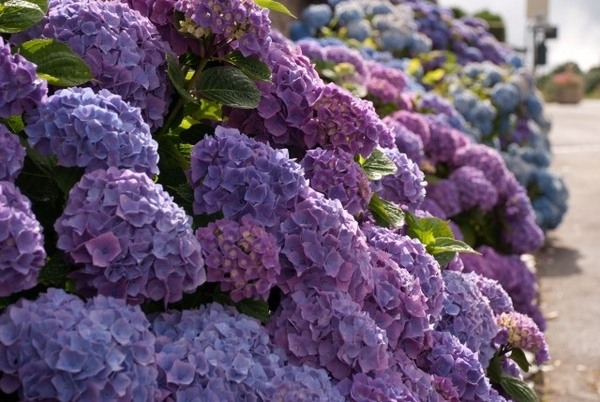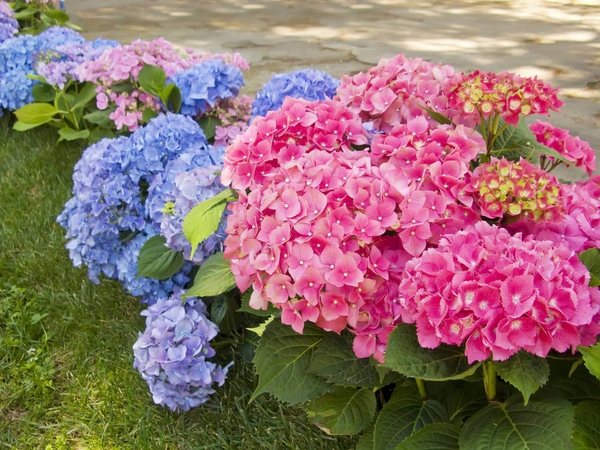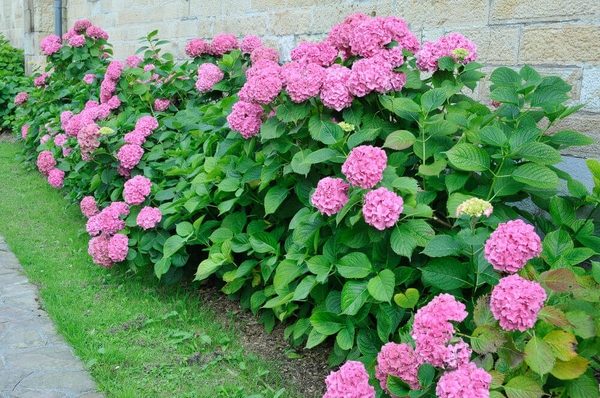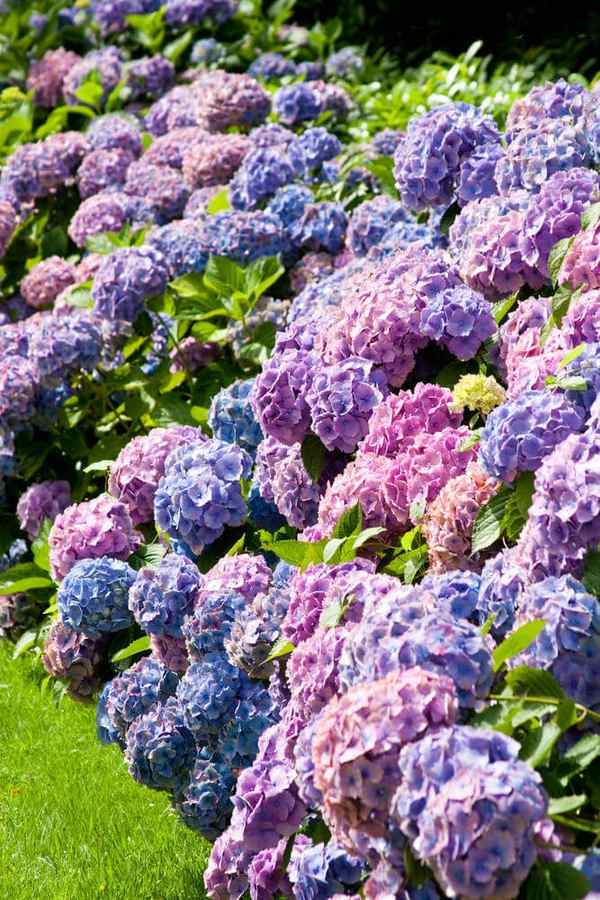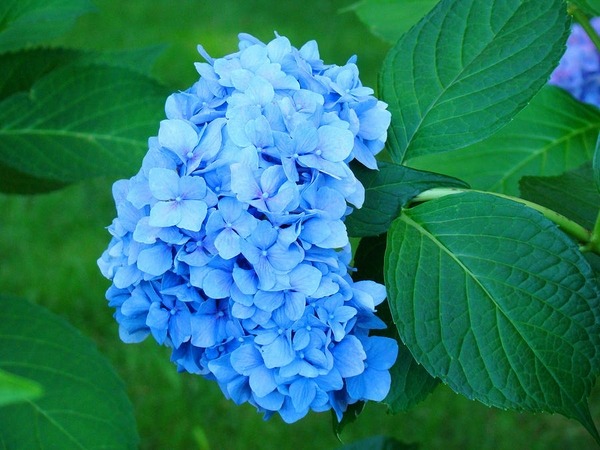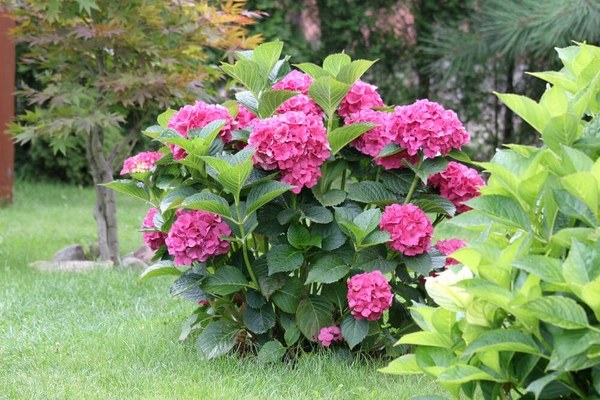Endless summer hydrangea is one of the most popular summer flowers for the garden. They are easy to care for, they offer magnificent flowers in attractive colors and have the charm of a rural idyll. Hydrangea is loved by many gardeners. It is a flowering shrub that can spend the winter in the open field. Flowering begins in mid-summer and lasts until autumn. The flowers have a wide color palette it can transform any backyard or front yard and can become a real decoration of any outdoor space. Hydrangeas are wonderfully expressive plants and will please your eye for many years. They are suitable for various styles of garden design. Caring for hydrangeas do not require a lot of effort and with the right choice of the place and providing moisture they are very undemanding. Plant this beautiful shrub in your garden and you will be enchanted by its beauty.
The name hydrangea comes from the Greek “hydor”, meaning water, and “angos” meaning vessel, in reference to the plant’s affinity for water and the its cup-shaped flowers. Hydrangea is a native plant in southern and eastern Asia (China, Japan, Korea, the Himalayas, and Indonesia) as well as the Americas and includes more than 70 species of plants. Nowadays hydrangeas are widely used in the design of gardens and parks and their beautiful colors create a spectacular visual aesthetics. We shall look at some of the most beautiful types and varieties of hydrangea and give you some advice on planting hydrangeas in the garden as well as some care tips, and, of course, provide an opportunity to enjoy the fabulous colors of hydrangea gardens in the gallery below.
Planting and care of endless summer hydrangea – tips for beginners
Planting hydrangeas and taking care of endless summer hydrangea have some special and particular characteristics. Unlike most plants, hydrangea likes shade and partial shade, it suffers from direct sunlight. It is best if you plant hydrangeas on a large free spot as it requires some space and the more air and space around your hydrangea, the more beautiful and larger will be its blossoms. Most hydrangeas thrive in rich, porous, somewhat moist soils. To lighten and enrich a clay soil you can use compost, manure and peat. All hydrangeas will bloom and grow well in morning sun and afternoon shade.
How to water hydrangeas?
Hydrangea loves moisture and one of the main requirements for the cultivation of this plant is regular and abundant watering. You will easily know if your hydrangeas need more water by the leaves of the plant. They are green only if their moisture is sufficient. You need to keep in mind that despite of the fact that hydrangeas need moist, they do require well-drained soils. In heavy, wet soils, their roots are likely to rot. It is recommended that newly planted hydrangeas are watered frequently until the plants put out new growth, which is an indication that the roots are established. Drip system or soaker hoses around hydrangeas are the best way to water your plants as they deliver water directly to the ground, keeping leaves dry and a drip system does not waste water through evaporation compared to overhead sprinklers, for example. When you grow hydrangeas indoors or in flower pots, you should keep in mind that they have the same requirements as garden species. Place in a shady place, watered regularly and thoroughly.
Fertilizing hydrangeas – when and how?
Endless summer hydrangeas will grow best if you fertilize them once or twice in the summer with either chemical fertilizers or organic matter. The organic method includes applying manure (and/or compost) around the roots and you will have excellent results. Organic additions can be combined with a small dose of chemical fertilizer to maximize the effect. Hydrangeas should not be fertilized after August as fall is the time when hydrangeas begin preparing for dormancy. You cannot change the color of the hydrangea blooms with a fertilizer. This is possible with the help of ingredients added to fertilizers or to the soil.
Endless summer hydrangea colors and soil acidity
Endless summer hydrangea can dramatically change its color depending on the acidity of the soil. The ideal soil for this plant is slightly acidic to acidic, with pH 6.5 – 4.5. However when you want to change the color of hydrangeas you have to know that white hydrangeas do not change their color. It is only hydrangea macrophylla (mopheads and lacecaps) that can actually change color, so make sure you grow the right kind. How to change hydrangea colors? You have to measure the pH of the soil. When you want blue colored hydrangea the soil has to be acidic with pH levels of 5.5 or lower. For pink flowers, you need more alkaline soil with pH levels of 6.5 or higher. To achieve a pretty palette of blue, pink, and purple hues, get your soil to a pH level between 5.5 and 6.5.
Adding small amounts of sulfur or garden lime when fertilizing will also help you change hydrangea color. Hydrangeas treated with sulfur will remain or turn blue. Garden lime results in pink but changing the color takes time, sometimes a month, and will not happen overnight so you need to be patient. To keep the desired shade of color you have to keep treating the soil around the root area.
How to prune endless summer hydrangeas?
A basic requirement for pruning hydrangeas is to cut the plants in early spring prior the beginning of active vegetation so that plants have sufficient time to develop flowering shoots. The best time for endless summer hydrangea pruning is from March to April. Endless summer hydrangeas require very little pruning day-to-day, so you should be careful not to overdo it or you will be removing potential blooms. Carefully remove the dead blooms until the first and healthy new flowers are formed.
Endless summer hydrangea – choosing the right species
There are two main groups of endless summer hydrangea and you can choose the particular species as per your taste and garden design. The first group of hydrangeas includes the ones that bloom on new growth. They form their buds in early summer and do not require special care.
Hydrangea paniculata is an excellent choice for beginner gardeners. It has cone-shaped flower heads with whitish color which grows more intense. This type grows quickly and is very easy to care. The most common types are Floribunda, Grandiflora, White Moth.
Hydrangea arborescens, also known as smooth hydrangea or wild hydrangea, has large white – creamy flowers that grow from May to September and can reach a height of more than 2.5 m. Hydrangea arborescens Annabelle produces large blooms in late summer.
The second group of Endless summer hydrangea includes varieties that grow on old (last year’s) stems.
Hydrangea macrophylla has two varieties -“mopheads” which have big of flowers, and lacecaps – airy, elegant, flat-topped clusters of flowers Some varieties Hydrangeas will flower only on old wood. Some will flower on both new and old wood. The blooms are generally blue or pink depending on the pH of the soil. “All Summer Beauty” has profuse, dark blue flowers, pinker on soil with neutral pH. “Nikko Blue” is with large, rounded blue flowers while “Blue Wave” varies from rich blue to mauve or lilac-blue to pink.
Hydrangea quercifolia (known as oakleaf hydrangea) offers spectacular fall colors which range from red to purple or burgundy. The most popular varieties are “Snow Queen”, “Snowflake”, and “Alice.”
Hydrangea anomala is a climbing hydrangea, with tiny white flowers surrounded by occasional full floret, grows slowly and it may take years to reach its full height.
Hydrangea serrata – the flowers are large and round. Blooms from early summer to late autumn. Likes the sun and reaches a height up to 1.2m
Hydrangea aspera sargentiana, (hydrangea aspera villosa) – impresses with soft bright green leaves, which have a diameter of up to 30 centimeters. The inner flowers are purple, surrounded by bright pink rings. Bees love these flowers and visit them often. The real beauty of this plant is in the summer. The sizes range up to 4 meters.
Hydrangea tardiva – a fast growing shrub which blooms in early to late autumn and has sharply pointed white flower heads that turn purplish-pink with age.
Nowadays you can find a large number of Endless summer hydrangea varieties, so you can choose the best plants for your garden. They are incredibly attractive not only for the colorful blooms, but also for the beautiful lush foliage. You can grow hydrangeas together with other plants, or in groups. They are an excellent choice for a living fence or a privacy garden fence. Hydrangeas are often used for spectacular festive and wedding decorations, table centerpieces and work beautifully with many other flowers – roses, daisies, amaryllis, etc. A vase of hydrangeas will add beauty and a romantic touch in any room.

